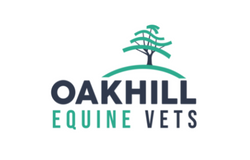Articles
Stay informed with our topical articles, all written by our equine vets.Can we fight resistance?
Can we fight resistance? Responsible equine worming. The approach to worming of the general horse population has changed significantly over the years. Unfortunately there are no new worming products in the pipeline and resistance to the current wormers is becoming more and more of an issue. Testing to identify those horses (approximately 30%) that carry […]
Read MorePoisonous Ragwort
Did you know that Ragwort is poisonous to horses, ponies and donkeys?! If eaten, the toxins in ragwort can accumulate over time and have the potential to cause irreversible liver damage. Your horse may get just as ill from eating a small amount of ragwort over a long period as it would eating a large quantity […]
Read MoreStumpy’s corneal ulcers
Stumpy presented to equine vet Jess when his owner noticed a very swollen and closed left eye (blepharopasm) with some discharge (epiphora) after coming in from the field. On further examination he had damaged the top surface of his eye (cornea) and several areas could be seen after applying some fluorescein dye. This is a […]
Read MoreRCVS Accredited
RCVS accredited – What does that mean? What is the Royal College of Veterinary Surgeons’ Practice Standards Scheme? The Practice Standards Scheme (PSS) is a voluntary accreditation scheme for veterinary practices. It was set up by the Royal College of Veterinary Surgeons (RCVS) in 2005 to promote and maintain high standards in veterinary care. The Scheme […]
Read MoreOsteoarthritis in the adult horse
Osteoarthritis (OA) is one of the most common causes of lameness in the adult horse. It is primarily a disease of the articular cartilage, a thin layer of protective material covering the surface of bones within joints, with progressive deterioration which can result in pain and inflammation. Whilst OA can be a significant source of […]
Read MoreEquine Castration Clinics
Equine Castration Clinics Monday 29th April 2019 & Thursday 23rd May 2019 at the Oakhill Equine Clinic, Langley Lane, Goosnargh, Lancashire, PR3 2JQ Only £130 + VAT Price includes: Procedure under general anaesthesia, sedative, pain relief and antibiotics. If horse is not vaccinated, an additional cost will be added for tetanus anti-serum. Call 01772 861300 to book. Terms and Conditions Horse must […]
Read More